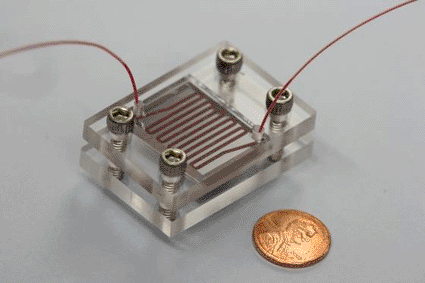Device Efficiently Captures and Identifies CTCs in Blood
By LabMedica International staff writers
Posted on 14 Mar 2011
An innovative device based on Velcro-like nanoscale technology efficiently identifies and captures circulating tumor cells, or CTCs, in the blood.Posted on 14 Mar 2011
By capturing CTCs in blood samples, doctors can essentially perform a liquid biopsy, allowing for early detection and diagnosis, as well as improved monitoring of cancer progression and treatment responses.

Image
The new CTC enrichment technology is based on the University of California Los Angeles (UCLA; USA) team's earlier development of "fly-paper” technology. The technology involves a nanopillar-covered silicon chip whose "stickiness" resulted from the interaction between the nanopillars and nanostructures on CTCs known as microvilli, creating an effect much like the top and bottom of Velcro.
The new, second-generation device adds an overlaid microfluidic channel to create a fluid flow path that increases mixing. In addition to the Velcro-like effect from the nanopillars, the mixing produced by the microfluidic channel's architecture causes the CTCs to have greater contact with the nanopillar-covered floor, further enhancing the device's efficiency.
Once the blood samples flow at a great speed in the device, the cells purportedly bounce up and down inside the channel, slam against the surface and are caught. Hence, a wider number of CTCs are seemingly captured. The crafted device appears user-friendly with a semiautomated interface that enhances the earlier device's purely manual operation.
In a study published in the March 2011 journal Angewandte Chemie, the UCLA team described the successful demonstration of this "nano-Velcro" technology, which they engineered into a 2.5 cm x 5 cm microfluidic chip. This second-generation CTC-capture technology was shown to be capable of highly efficient enrichment of rare CTCs captured in blood samples collected from prostate cancer patients.
"The device features high flow of the blood samples, which travel at increased (lightning) speed," said senior study author Dr. Hsian-Rong Tseng, an associate professor of molecular and medical pharmacology at the UCLA Crump Institute for Molecular Imaging and the California NanoSystems Institute at UCLA.
Related Links:
UCLA
UCLA Crump Institute for Molecular Imaging














